-
Posts
2,622 -
Joined
-
Last visited
-
Days Won
37
Content Type
Profiles
Forums
Gallery
Events
Blogs
BMT Wiki
Collections
Store
Posts posted by doubleclutchinweasel
-
-
Replaced the leaky rubber hoses on the transmission with tubing this morning. No more leaks! Maybe get some pics this afternoon.
-
The parts used were as follows:
Synchronizer Kit: K-3493 (New Rings and New Sliding Clutch)
O-Ring Kit: K-1447
Gasket Kit: K-2199
This K-3493 (formerly K-2447) synchro kit includes the K-2446 kit (improved rings and new springs), and includes the 20336 sliding clutch. This eliminates the trouble of trying to make sure the hub used matches up to the rings used. The 20336 hub has 13 splines. The other hub (20323) has, I believe, 18 splines. I hink that one was found on heavier transmissions. The 20336 replaces the old 16716, and the 20323 replaces the old 16759. The splines in the new hub continue completely through the bore, whereas the original hub in mine only had partial splines, and was relieved the rest of the way through. The new one, therefore, has much more spline engagement.
I THINK the K-3491 (formerly K-2445) synchro kit MIGHT have fit the old hub, but don't quote me on that. I felt it wasn't worth fooling around with the old hub, considering the difference in the kit prices. Besides, now i have current parts!
The O-ring kit and gasket kit were dirt-cheap, and were actually cheaper then just buying the handful of gaskets and O-rings actually needed. So, that one was a no-brainer!
-
Everything is back in. Works MUCH better now. A couple of those old air lines still need attention. I'll probably tinker with that a little this weekend.
-
Mine did it worse when it warmed up. Almost flawless when cold. About 50/50 when warmMine picks and chooses when it wants to grind from hi to low, sometimes at 15mph it doesnt do it and then all a sudden going into low at 5-7mph it will. It isnt that often to make me want to do it asap though.
I tested it by rolling along at about 20 mph, in neutral, clutch released. Switch back & forth between high & low.
Worked fine going into high, & always ground going into low.
I'm hoping this straightens it out...
-
-
Love the aux box adapter for the jack.
Thanks! I was kinda proud of that. I'm gettin' too old to hoss these parts around.
-
-
Hopefully, I can post some pictures of the process soon. Raining too hard right now...
-
Yeah, that's what I've been doing, too!
I hope I find everything else in there in okay shape. Don't want to spend a fortune in there. But, it works now...even downshifts smoothly about half the time. So, I'm hoping it's mostly sound.
Anyhow, I'm hoping a complete synchro kit (about $250), a gasket kit (about $35), and an O-ring kit (about $15) will smooth it out.
If the rain'll hold off, I'm going to try and tear into it this evening. We'll see...
-
My RTF-915 Road Ranger has started grinding when shifting from hi to lo range. It's fine going into hi. I think I've found the most likely part numbers for the synchro unit, gasket kit, & o-ring kit. I've also downloaded the parts and service manuals from Eaton. These pictures are of a device I've built to attach the auxiliary section of the trans to a floor jack to aid r&r, as well as serve as a work bench. Once I get it apart, hopefully I'll be able to verify part numbers & get it shifting smoothly again.
At a future date, I'll also need to drop the whole box & put in a clutch. When I do that, I think I'll tear the box down & convert it to an overdrive model. But, that's another story...
More pics & updates to follow...
-
Looks just like the power steering reservoir on my R-model.
The next argument will be over what type of oil to put in it!
By the way, that also adds ballast to the RH side!
-
Yep, I had the same thing happen on an '87 R model and a '95 DM. The first time it happened I thought I was going crazy!
Me too. 'Course...I didn't have all that far to go...
-
So a tachometer ear, a fuel pressure foot and s**t for brains? Sounds like a truck driver to me!
You tell 'em, 'Dog!
-
How often do you guys double clutch? I found that its very useful for climbing a hill and getting in the gear quickly to get torque going again quicker. Is it a good practice to do this all day long when loaded or just when you feel you need it? My dad was saying thats how we were taught back in the day to shift and there is nothing wrong with it as long as you are not slipping it. So this is how i do it. I go to around 1600 1700 and just as i get it out of gear i put the clutch about 50 - 70 percent down and it goes right in ( most of the time) and its a smooth transition. Is this how you all do it? Or do you have any tips? Will this wear out the clutch faster and require the clutch to be adjusted more frequently and should be avoided or is it just fine to do as long as you do it right?
Some good responses on this. But, some of them may not address your question!
Clearly, there are two ways to shift; clutchless and double-clutch. Both work fine...IF PROPERLY EXECUTED. You CAN upshift with a "single clutch", as long as you wait for the input shaft to slow down to "match up" the RPM and let it slide in without too much mismatch. But, you CAN NOT downshift without either double clutching or "floating" the shift, because you simply HAVE TO raise the input shaft RPM to the point where the the shift will engage.
Like most of these responses, I typically do not use the clutch to shift when things are nice and pleasant with the world. But, on occasions where I need to get out-&-in quickly, I'll use the clutch to get on with it.
You mentioned the partial depression of the clutch in the original post. Yes, I have been known to do that too! The main point when shifting, either with or without the clutch, is to UNLOAD the transmission to allow it to come out of gear easily...and not chip corners off the dogs! Then do the same thing going into the next one. Sometimes, that little partial de-clutch is enough to do that. Sometimes, a particular tranny will shift BETTER with a partial de-clutch than with the pedal all the way to the floor. Keeps things spinning, I guess.
Used to drive a Mack 18-speed Quadruplex which always shifted easier without the clutch than with...especially on those split-shifted downshifts! Kept you from getting hung-up between gears as much. Now, that's fun...trying to match up both ends of the box to get SOMETHING back in gear...while going uphill...loaded...and losing speed...before the silly thing came to a complete stop. I'm sure there are a few other old-timers out there who have experienced that particular little slice of heaven!!!
-
That happens more often than you think.Only time I ever ran a truck out of fuel,my first CH,a '91 I bought used,had a fuel heater in the left (draw)tank,so they moved the fuel guage to the right tank.Vent plugged up sucked the left tank dry whileshowing I had 3/8 of a tank,which I did in the right.Never trusted a fuel guage since.
I have a stick!
-
Fuel level kept falling in lh tank & rising in rh tank. Filled up the rh fuel tank. Fuel would not transfer to lh tank. Vent tubes were plugged. Cleaned them out and now the fuel levels equalized. Simple fix to a strange one.
-
Have tires. Need different ones. Mix of 10.00-20 & 11-22.5. 6 are caps. 1 has loose cap. On mix of rims. Pictures show 8 drive tires & 2 steer tires. Rims are 20 x 7.5 & 20 x 8 & 22.5 x 7.5 & 22.5 x 8.25. All Daytons. Like I said...a mix. 5 are 20" tube-type, 5 are 22.5" tubeless. All I want are 2 super-nice 11 R 22.5 steer tires...or enough cash to buy 2! Prefer on 22.5 x 8.25 Daytons. Can give more info & pics as needed. Steer tires are still on truck.
-
Read this thread. I asked some of the same questions, and got some of the same answers. See if any of this helps.
-
I'm a member of the ATHS, but rarely look at their forums. I met one or two pretty cool folks at some of the shows, too. But, I'm not sure I will even renew my membership. I get more advice and help off BMT that I can get from the ATHS members. Maybe they don't like me!
Will be interested in checking out that new site, though.
-
I hate to even comment about CDL stuff, because it seems to always ignite a powder keg, but some folks here are discussing CDL requirements. So, for what it's worth, I'll throw a little info out there. Sorry to all the other folks who were talking about something else altogether! But, maybe it will be useful to somebody anyway.
There are federal guidelines on commercial vehicles & licenses. There are also state guidelines on both commercial and non-commercial licenses. The state guidelines typically parallel the federal guidelines, but can be a little different from state to state.
Here in NC, there are both commercial and non-commercial licenses in class A, B, and C. Yep, 6 different licenses. And, there are endorsements for various things. There are even restrictions against certain things.
The class A, B, and C are directly tied to the weight and configuration of the vehicle, as several folks have mentioned above.
A class A vehicle is a combination vehicle of 26,001# or more GVWR (total of truck and trailer GVWRs), provided that 10,001# or more is on the trailer. The actual NC general statute also states that a combination vehicle of less than 26,001# combined GVWR is a class A vehicle, IF the trailer is 10,001# or more GVWR. But, more on that later.
A class B is a single vehicle of 26,001# or more GVWR. By definition, this vehicle can pull a trailer of up to 10,000#. If the trailer goes to 10,001# or more, this combination becomes a class A.
A class C is a vehicle which is not a class A or B. Single vehicles under 26,001# GVWR fall into this category. There are also certain provisions which have been changed, such as the addition of "any combination of vehicles up to 26,000# GVWR, driven by a person of at least 18 years of age." This was added in recent years, and means that certain combinations of vehicles, which would have fallen under the second type of class A vehicles, can actually be considered class C. An example of this would be a 15,000# GVWR truck and an 11,000# GVWR trailer. This would have met that second provision (over 10,000# trailer). But, with the addition of the newest class C description, actually can be driven by a class C license holder of 18 years or more age, because the combined GVWR did not reach 26,001#. Oh, and if you read between the lines, there ARE combinations of over 26,001# GVWR which could fall into class C. If a 25,000# class C truck is pulling a 3,000# trailer, this 28,000# combination DOES NOT meet either the class A or B requirements. As such, it fits the definition of a class C. That one will generally start a feud!
The commercial and non-commercial are just that...if the vehicle is engaged in the furtherance of a commercial endeavor, you need a commercial license of the appropriate class for the vehicle. If the vehicle is not used for any commercial purpose, then you need a non-commercial license of the correct class for the vehicle. The commercial use is what determine this. Obviously, if you are being paid to haul something, that is commercial. Also, if you are hauling YOUR stuff, but are being paid to use that stuff when you get it there, that is also commercial. An example would be hauling your dozer to perform paid dozer work for someone. Since the vehicle is involved in the furtherance of the commercial endeavor (paid dozer work), then the vehicle itself is commercial. This also parallels the "For Hire" and "Private" motor carrier definitions.
They (NC) do have one exception, however. If a commercial vehicle is a class C, and is not carrying a certain number of passengers or a certain quantity of hazardous material, then it does not require a commercial license. This is the case of a pickup truck which belongs to a construction company, for instance. Only non-commercial, class C licenses are required to operate them, even though they are engaged in the furtherance of a commercial endeavor. But, if you haul over a certain number of passengers, or haul hazardous materials in sufficient quantities to require placards, then a class C commercial license is required. This is also the source of the most confusion among discussions of commercial vs. non-commercial licenses around here. Many people think that any vehicle over 26,000# automatically requires a commercial license. Not so. According to the law, any vehicle UNDER 26,000# automatically takes a NON-COMMERCIAL license, providing it does not meet the passengers or hazardous material stipulations.
Again, the class A, B, or C is a classification based on configuration and GVWR. Commercial or non-commercial is a different discussion altogether.
All that being said, this is NC law. Your state can be different. If so, learn the laws in your state. I don't know them! I HAVE, however, spent many, many hours both studying the NC general statutes, and discussing the various scenarios with the folks at the NC DMV. I actually found most of them to be very helpful, once they actually understood the questions you were asking.
Also, I am not a lawyer. I do not offer legal advice. I only tell what I have leaned, or how I have interpreted it. My only advice is to contact the authorities in your state, tell them what you are trying to figure out, and talk to them.
Oh, and one other thing...disregard any advice from anyone who starts a sentence with "I've always heard ..." or "I always thought.." or "I was always told..." Go straight to horse's mouth (or the other end, depending on the individual!), and try to get the facts straight. Also, READ the actual general stautes for your state. They can be difficult to read, but sometimes they actually make some sense.
Good luck!
-
My truck (International 4400) has a factory gvw of 33000. Is it true if you register it at the DMV for more weight and you put stickers on the side of the truck that are more then 33000 DOT can't do anything about it if your over the 33000 pound mark because you have it registered for more weight.....
Tom
Tom,
Not sure about the laws in your state. But, in other states, you can be cited for carrying more weight than the unit is tagged for, OR for carrying more weight than the factory GVWR. Here, in NC, there IS a provision in the DMV regulations that state that, if appropriate modification have been made to the vehicle to allow it to carry more weight, that it can be tagged heavier than GVWR. It does NOT, however, go into any explanation of exactly what those types of modification would be. One can only assume that adding a tag axle, for instance, would entitle the unit to more weight.
It's one of those things you don't want to learn in the court room, isn't it?
Kent
-
 1
1
-
-
I have a brand new B-model Center link...I don't remember if it was for a B81 or a B-61.. But it's new.... you can email me... gas69@aol.com...
Okay. Sent you an email to that address.
Kent
-
...I'd still like to swap out my tandems for a single rear...
-
I have a brand new B-model Center link...I don't remember if it was for a B81 or a B-61.. But it's new.... you can email me... gas69@aol.com...
Will do...



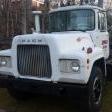
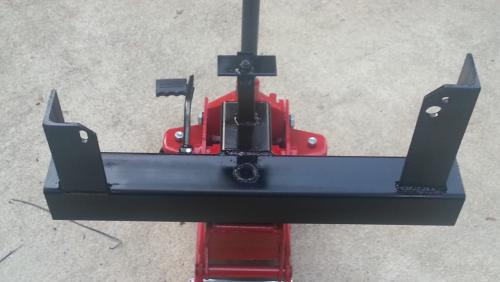
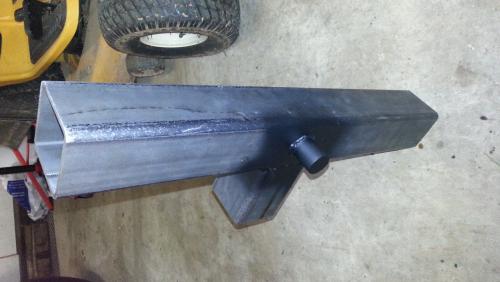
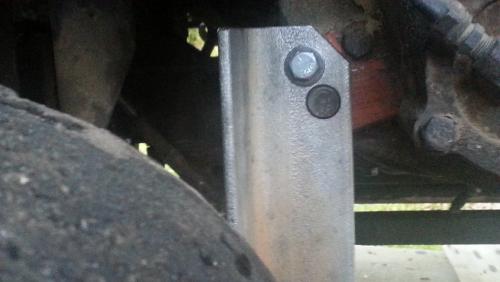
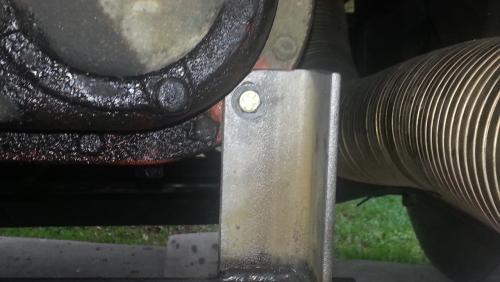
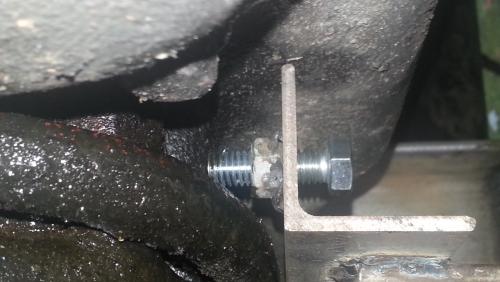
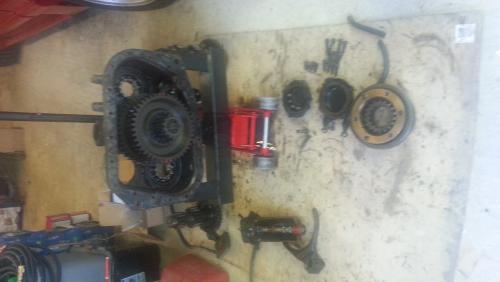
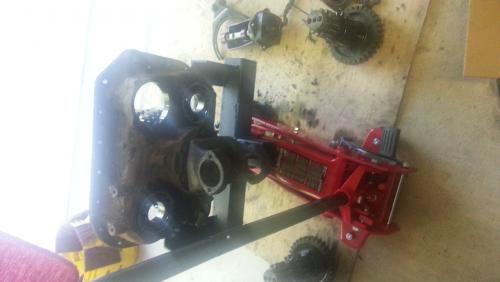
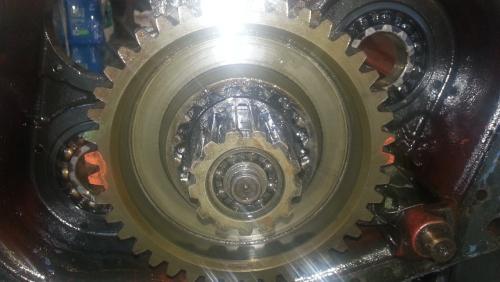
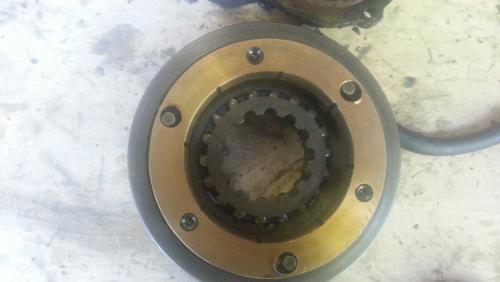
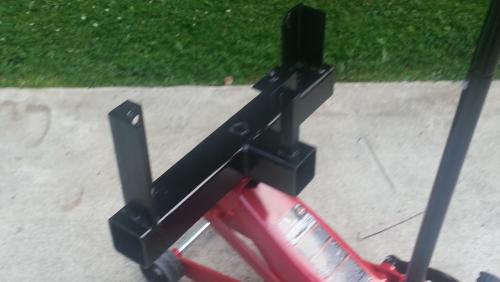
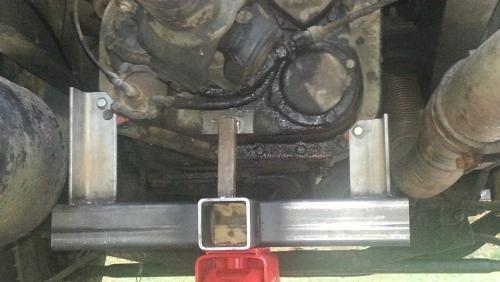
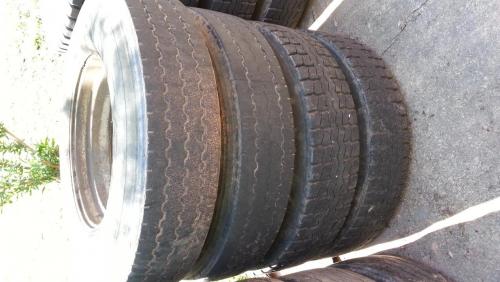
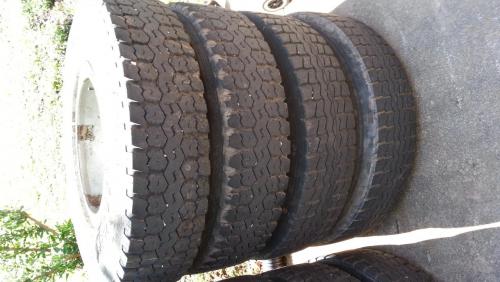
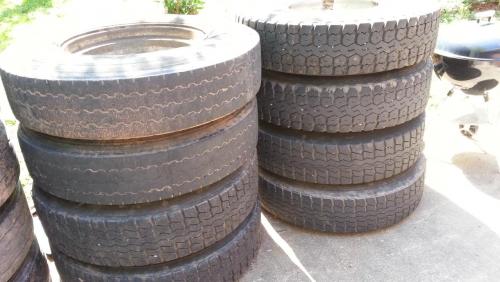
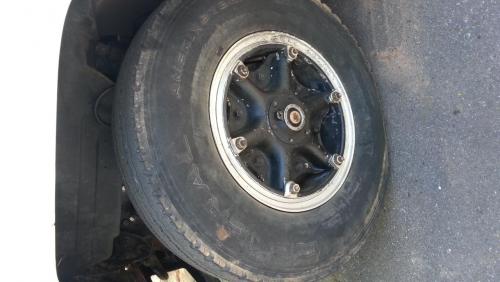
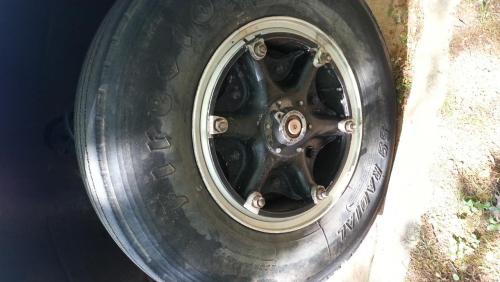

Road Ranger Hi-Lo Synchro Needs Replaced
in Engine and Transmission
Posted
All them there shiny new bolts sure make it look purty!